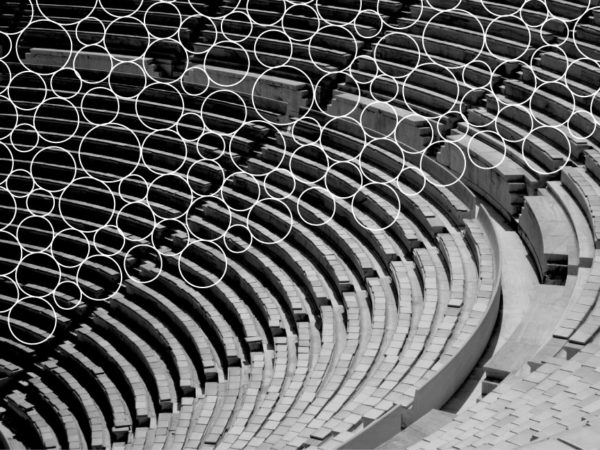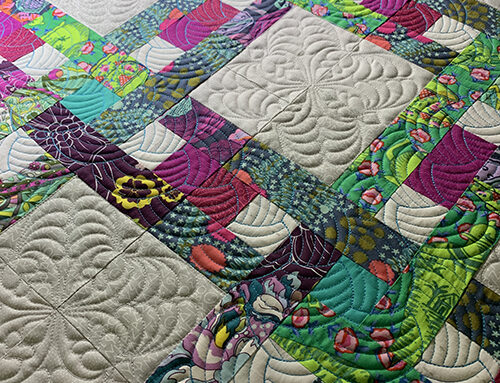Checking Design Alignments
Computerized quilting allows for precise and exact stitches. In fact, if you have to stop and stitch over an area, of the needle will stitch in the exact same holes, thanks to precision. Making sure your quilting designs are aligned will only help make your project look exact.
Keep in mind also, if you have set up your design in a simulator or using all the digital design tools at your disposal, you may find that the piecing or construction of your project is a hair less accurate than the computer generated design. Adjust as needed to give the illusion of perfect alignment.
Blocks
When placing and aligning blocks, most robotic quilting software has an actual “align” feature, where with multiple designs selected, you can align them to a top edge, middle, or lower edge.
To give the illusion of perfect, consider outlining the space in which the block is to be stitched. Now snap the block into that defined space. The block will skew slightly but look perfect as it relates to stitching. This is true for all types of blocks and quilting spaces, such as borders, corners, sashing, and blocks.
Edge to Edge
Edge to edge designs may appear to shift as you stitch down the length of the quilt. This happens when the quilt starts to draw up as a result of the quilting. As you advance the quilt rows, you may need to nudge or bump the design slightly in a direction to keep the digital position and the actual position consistent.
 Tracing
Tracing
Tracing is the key to accuracy. There are a couple options here. You may opt to turn off the actual stitch mode of your longarm to see exactly where the machine will travel or you might simply move the machine head over areas where you know the design should exists. Both of these methods will give you an accurate idea of the design’s alignment.
Load the Top
Many free-motion quilters will often float their quilt tops, meaning the quilt top is tacked at the top of the project to the batting and backing, then the rest of the fabric hangs free over the front of the longarm frame. For a computerized system, though, it is highly recommended to load the quilt top on to the quilt-top-bar to keep the fabric from drifting as the machine head pushes it around while stitching. This will greatly improve accuracy and alignment.
We cannot wait to see your projects. Use the hashtag #prostitcher when sharing.

Content in this feed is © Copyright 2023 by Pro-Stitcher and may not be republished without written permission. You’re welcome to forward the email to a friend or colleague but it’s not okay to add the RSS feed automatically as content on a blog or other website. The FTC requires us to tell you that Pro-Stitcher has provided products by other companies in the course of doing business. The FTC requires us to advise you to take this information into consideration when reading this posting.






I would like to understand why attaching the quilt top to the bar will stop drifting.